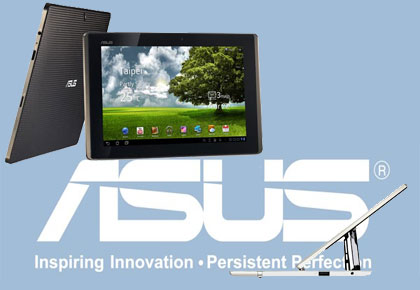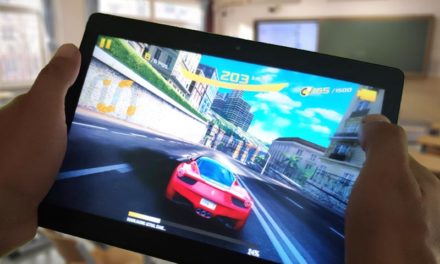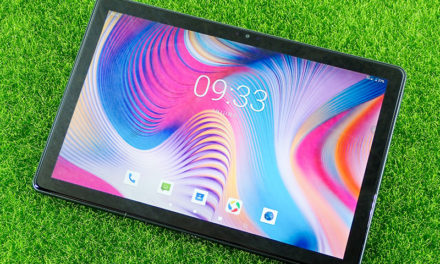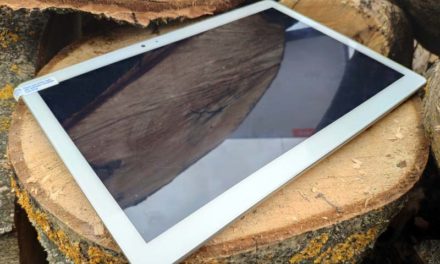
We tried: Tablets every day

 Tablets, or tablets in Hungarian, have been the subject of debate since their advent as to whether a tablet is needed, or whether this new device makes any sense at all. We will try to get around this issue with ASUS.
Tablets, or tablets in Hungarian, have been the subject of debate since their advent as to whether a tablet is needed, or whether this new device makes any sense at all. We will try to get around this issue with ASUS.
From a historical point of view, it is important to mention that the tablet as such did not start with the iPad. There were machines called tablets before that had more in common, but the most important was the touch-sensitive display. These machines mostly looked like a laptop, later like a netbook. The hardware was the same as in the usual portable machines, the only difference being the touch-sensitive display and the rotatable hinge that connected the display to the keyboard, which gave us the usual tablet layout.
Despite the fact that these machines have been available for several years, they have not become a hit product. The breakthrough also required Apple. Why?
There are several reasons. Let's start with the hardware! The first tablets were heavy and thick, plus the battery life wasn’t a parade either, even though we wanted to use a tablet as a mobile device, it would be best if it could work without charging all day. This was not the case with contemporary devices, the battery life of one and a half hours was already good.

Then there was the touch sensitive display. As all our readers will know, there is also a difference between touch sensitive displays. In a previous article, we discussed the difference between resistive and capacitive displays, so it’s enough to know that nowadays we can use screens with multiple finger controls, but in the early days they were only detected at one point. In addition, to be able to use them we had few fingers, we also needed a stylus, which in turn was not practical without the protective film, which in turn made the perception even worse, which in turn… I do not continue, it is enough that the first tablets were not very practical structures.

In addition to the hardware, the software was also problematic. The machines were running Windows, but the usual desktop version. There were a couple of programs where you could take notes in handwriting, for example, but whoever tried these programs that year might agree that they were almost useless. Plus, the desktop Windows wasn’t a little ready for use with the touch screen, so you had to push tiny buttons for everything.

So we can stick to the fact that the first tablets were no more than an expensive toy, machines that were essentially the same as the portable machines of their age, but to flash them in front of the others, the screen could also be tapped.

In order to get the tablets in the public consciousness, it was necessary for Apple to successfully market a machine that no one knew what it was going to use, but it was nice, it had a big display that could run on battery power for a long time and perhaps most importantly , there was an apple on the back. Is it any wonder that people will lose for it?
{jospagebreak_scroll title = Tablets of Today}
Reading the previous page, we are no longer surprised to list why today’s successful tablets over the old ones may have spread.
Let's start with the hardware again! The hardware of tablets is not an unprecedented story, as the many years of development of smartphones and PDAs were essential for their development. Handheld portable devices have become smarter over the years, thanks in large part also to Apple. With the advent of the iPhone, attractive user interfaces, interesting games have appeared on the phones that have had a beneficial effect on the development of hardware. It simply required a more powerful processor, more memory, and a higher resolution display.

With the appearance of the first siphon, a huge and extremely spectacular development began. The hardware of mobile devices has evolved at a brutal pace, as have batteries, as more and more powerful hardware has consumed more and more energy. Over time, there have been devices that, while brutally strong compared to their contemporaries, have performed mournfully in terms of battery life. Not that for more, but they couldn’t stand without a charge for a single day.
In addition to the development of hardware, software has also started to evolve. Many people wanted to copy Apple’s success. Microsoft and Symbian have lagged behind the competition, but Android has been released, which is Google’s free mobile operating system.

In front of the apple phone, only the old mobile Windows existed, which was pretty much as optimized for touch-sensitive surfaces as its desktop counterpart. This is of course quite interesting because the desktop version was invented to stare at large monitors, while the mobile version was made specifically for handheld devices. Because of this, it would have been expected that Microsoft would create a suitable interface for this, but They thought it was unnecessary.
Once increasingly powerful processors were able to run more serious programs, there was no need for traditional Windows on tablets. On the iPad, iOS ran and runs, while other manufacturers used Android versions 2.xx or 3.xx.

Many people believe and are right that the success of tablets depends on the software. If there are not enough apps available, we will not be able to use our tablet. If we can’t use it, we won’t buy it. So success, with the right hardware, depends most on the right software. Apple is pushing the iStore, Google is pushing the Android Store cart.
Nowadays, more and more programs are appearing on big screen tablets. Manufacturers are offering tablets with more and more impetus and, thankfully, more and more cheaply. Is it time for a real breakthrough? Maybe, but for this to happen, you need to convince skeptics that the tablet is not just a fashion item, but a useful tool in one. Manufacturers, including ASUS, are working on this, and I decided to let myself be convinced, but at least I give the tablets a chance to convince me they are really helpful.
{jospagebreak_scroll title = ASUS Tablets}

The gadget called ASUS Transformer popped big this year, it was a real sensation. A strong proci, NVIDIA Tegra was responsible for the picture, in a word, it was a power plant. To avoid this, the manufacturer sold two versions. One was a simple tablet, but the other was a machine with a keyboard. It was natural that I asked him for one of the victims. The other machine was an ASUS Slider, which didn’t turn off, but got a permanent keyboard.
I don't want to write too much about the machines, they are not modern pieces, there are a lot of tests on the net about them. The pictures in the article I think tell everything about them.

The point of this article is not the performance of the machines, but their usability. I admit, I was already negative about them because I considered the tablet to be at most a good toy. Maybe that’s why I decided to try to make the most of them.

“Plastering” the machines was easy. I'm using an Android phone anyway, so I have a Gmail account where my mail and friends are saved. After Android started, it was enough to sync, set up my Facebook access, my email account information, so in about 10 minutes, all the data was on the machines that I needed for daily use. I took some games from the market, installed my favorite navigation app, looked for a good file manager, a program to manage Word and Excel files and I was almost done, all I needed was software to make FTP access easier.

Fortunately, the Android Market generously pours out better than better apps, and in most cases we also find a free app of the right quality. True, in return we have to endure some advertising, but it is worth trying, and if the program is proven, we can usually download the full and of course ad-free version for a few hundred forints.

You could say that in my case, a tablet can be used a lot, as my work is connected to the net, I write articles, I upload and download files, in a word, such a portable machine can be an ideal employee. That's right, but for a tablet to be a really good tool, a keyboard is essential, and if you have a nice little mouse, that's the tip. The biggest problem with tablets was the lack of a keyboard. This was not helped by any separately connectable solution, because one of the great advantages of tablets is the easy portability. If a keyboard can be dragged there the magic.

Fortunately, both ASUS machines had keyboards. Transformer evoked a netbook with its openable form. Actually, that’s exactly why I couldn’t like it. One sometimes wants to use the tablet as a tablet, i.e. sometimes it is enough to poke the screen. You can also do this with the Transformer, but only by disconnecting the keyboard from the display. Okay, but where do I put the key until I need it. Because of this, the Slider became the runner-up for me, since if I wanted there was a key, if I wanted it wasn’t. I didn't have a treadmill, but I didn't miss it either, because I could poke the screen.

I had to realize that the tablet in this form is not only a toy but also an extremely pleasant tool. Also, I make no secret, I often ripped the fruits in the Fruit Ninja, pinched a lot, and of course slipped with birds. It was good to play on the big screen.
Unfortunately, most of the programs available on the Market aren’t optimized for tablets, but luckily most programs can be used with more or less bugs on large displays, and more serious programs already have a tablet version.
For me, so far, in addition to the keyboard, software has been the main deterrent to getting a tablet. All of my programs are Windows-based, and I assumed I wouldn’t find a program on my tablets that would trigger my Windows software. The nice thing about it was that I was right, but it didn’t bother me at all. I had to realize that I simply had to sweep aside my prejudices and realize that the tablet was not a desktop machine. It is used to perform the most necessary tasks on the go. There is no need for a Word-capable editor or a Gimp-capable image manipulator. I will not perform the tasks that require such knowledge on the go.

What did I use the tablets for? Essentially everything I just needed at the moment. I loved the horror of the large navigation display on the go. I took photos with him, uploaded pictures to the net, corrected an article, made a video phone call, made Facebook, talked to a chat program, so it was basically good for everything, both for work and for keeping in touch. I loved the experience of running with a tablet.
However, I also have to admit that I hung up at the end of the work day and didn’t open it until morning. For others, it would have been time for fun, consuming content, practicing Facebook, and other forms of communication. For me, rest time means machinelessness. True, if we travel, we can carry music, a movie on it, upload pictures to them, so the fun can work, even in my case.
I had a week and a half to experience the lives of tablet owners. And the question of whether I want to become the owner too will be answered on the next page.
{jospagebreak_scroll title = Summary}
One and a half weeks. Not much time, especially when someone is using an Android gadget for the first time. For me, Android was no longer new, I use Google services anyway, so there was no problem using the tablets.
As I wrote on the previous pages, two factors determine, at least in my opinion, the usability of tablets. The presence or absence of a keyboard and the software we can use. In the second question, as I browse the Market offer a lot, I felt there would be no problem. True, I was prepared to find it stupider than the programs running on my desktop, but that wasn’t a disturbing moment at all during use.

Rather, it would have been the lack of a keyboard. I still hold that a tablet without a keyboard is no more than a toy. Anyone who tells me it’s convenient to work on a virtual keyboard mustn’t really want to work on it yet. Of course, it’s not that you can’t whip up a message sometimes, but for longer texts, it’s a matter of suffering.
For those who prefer to approach from the content consumption side, there is no problem with this, as you do not need keys to read. Those who play also do not suffer from a lack of physical buttons. A “simple” tablet is definitely good for them, but those who also want to work should not make the mistake of buying a machine without a keyboard. Whoever produces content, even if that content is just taking notes in a trial, well, will suffer. Sure, you can put the chili-vili iPad on the table, but it will only be good for one thing, peasant blindness. Forget it!

Of course, this article isn’t specifically about ASUS, so even though the Slider has become my big favorite, I’m not saying it’s just this manufacturer winning. What is certain is that they offer machines that I would be happy to recommend for purchase. And if you want to flourish, wait a little longer, as the second edition of the Transformer will be in stores soon, with even more powerful hardware and the new Tegra, of course.
Last paragraph, should we take a tablet or not, should I buy a tablet or not? For those who are now planning a simpler mobile machine, do not give God the purchase of a netbook, I recommend those who forget about netbooks, buy a tablet with a key, it will be good fun! For those who are thinking of a notebook replacement, I say, forget it, they won’t love it. For those who want to read, play, I suggest you don’t deal with the keyboard, you won’t need it.
All that was left was to think through what I had read so far and decide the request, should I buy a tablet? I mean, not yet. I have a good ASUS netbook and I have a good Android phone with a big screen. Dual-core proci, other goodies, so I'm fine with it and my laptop. It would be another case if the machine broke down, I wouldn’t really think about what to buy instead. I’m pretty sure a Slider would be traveling in the mother seat the next day.
 ASUS EEE Pad Slider and Transformer
ASUS EEE Pad Slider and Transformer















